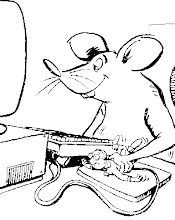
Assuming that you now know you should be looking for tight sharp WMs on RSI - you will be rejecting those which have internal dojis or near dojis on Price. You will soon gain the expertise to find the timeframe on which the dojis disappear and the required shape appears. If there is no timeframe to do this, there is no trade!
Probability of successCheck the RSI level - which group will the shape be in?
Check the Price action compared to the Bollinger Bands and middle line. Which group is it in?
Is there a nearby Resistance/Support level that could well act in your favour? (See the grey and blue coloured lines on the diagram.)
Likewise, is there a trendline of Fib level?
If you use EWT do you think you are looking for an end of Wave 5 or a C?
Use all of these to assess the probabilty of its success.
Assess the risk to your capitalHow far is it from the B/E entry on Price to the place where you are going to position your S/L?Anything up to 20, I use whole trades. Once it gets above this I scale it down, so 40 needed will only be a half trade. This limits the max risk to 40*0.5=20.
You have now assessed your risk.
Assess the extent of your initial rewardThis means taking into account the nearness or otherwise of a Price level which will get in the way. Typically these will be a previous strong resistance/support level or the middle Bollinger line (which is why I like widely spaced Bollinger Bands).
Is there "room to trade"?
Can you get the trade to B/E and still be a reasonable distance off the Price action?
Is the the distance to the problem area at least twice the initial risk required?
You have now assessed your initial target reward.
The ideal trade?Timeframe >= 15 mins (guideline)
High probabilty of success.
Low risk to capital.
High initial target reward before you get to a problem area.
What Trigger & I call a HPLRHR trade.
cheers theory











